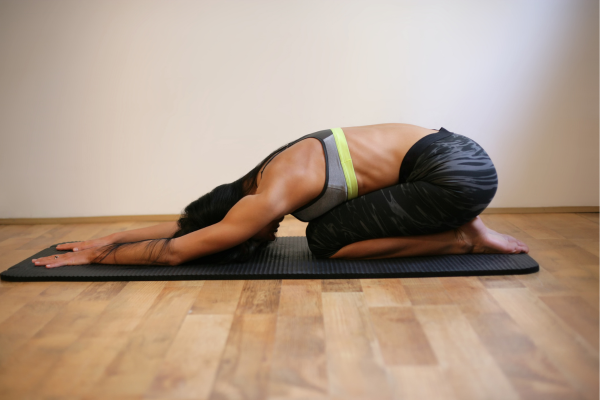The Benefits of Yoga for Stress Reduction – By Malsha – eLanka

Yoga is a mind-body practice that combines physical postures, breathing exercises, and meditation techniques. It has been shown to offer numerous benefits for stress reduction and overall mental well-being. Here are some key benefits of practicing yoga to reduce stress:
- Stress Reduction: Yoga helps reduce the body’s stress response by activating the relaxation response. Deep breathing and mindful movement promote a sense of calm and reduce the production of stress hormones.
- Improved Mental Clarity: Regular yoga practice can enhance mental clarity and focus. It helps quiet the mind, allowing individuals to better manage racing thoughts and stress-induced mental fog.
- Muscle Relaxation: Yoga postures (asanas) involve stretching and releasing tension from various muscle groups. This physical relaxation can translate into reduced physical symptoms of stress, such as muscle tension and headaches.
- Enhanced Breath Awareness: Breathing exercises (pranayama) are a fundamental aspect of yoga. Learning to control and deepen the breath can help individuals manage stress, anxiety, and panic attacks more effectively.
- Mindfulness and Meditation: Yoga encourages mindfulness, which involves paying attention to the present moment without judgment. Meditation techniques used in yoga can reduce rumination and worry, leading to a more peaceful state of mind.
- Emotional Regulation: Yoga practice can help individuals develop better emotional regulation skills. It provides a safe space to explore and process emotions, reducing emotional reactivity.
- Lowered Blood Pressure: Several studies have shown that regular yoga practice can lead to a decrease in blood pressure, which is often elevated in response to chronic stress.
- Improved Sleep: Stress can disrupt sleep patterns, leading to insomnia and poor sleep quality. Yoga can promote better sleep by reducing stress and promoting relaxation.
- Increased Resilience: Over time, consistent yoga practice can build emotional and physical resilience, making individuals better equipped to handle stressors in daily life.
- Community and Support: Joining a yoga class can provide a sense of community and social support, which can be beneficial for individuals dealing with stress-related challenges.
It’s important to note that the benefits of yoga for stress reduction may vary from person to person. Some people may experience significant improvements quickly, while others may need more time and consistent practice to see results. Additionally, it’s advisable to consult with a healthcare professional before starting any new exercise or stress management program, especially if you have underlying health conditions.
To find specific articles on this topic, you can use online databases like PubMed, Google Scholar, or visit websites of reputable health and wellness publications. Search for keywords like “yoga and stress reduction,” “benefits of yoga for stress,” or “yoga for mental well-being” to find articles that delve into the scientific and practical aspects of using yoga as a tool for stress management.
What are the Yoga postures ( Asana ) for Stress Reduction

Yoga includes a variety of physical postures (asanas), breathing exercises (pranayama), and relaxation techniques that can be effective for stress reduction. Here are some key yoga movements and practices that can help reduce stress:
- Child’s Pose (Balasana):
- Kneel on the floor with your big toes touching and knees spread apart.
- Sit back on your heels and extend your arms forward, lowering your forehead to the mat.
- Breathe deeply and relax in this resting pose, allowing tension to melt away.
- Corpse Pose (Savasana):
- Lie flat on your back with your legs slightly apart and arms at your sides, palms facing up.
- Close your eyes and focus on deep, mindful breathing.
- This pose promotes complete relaxation and can help reduce both physical and mental tension.
- Cat-Cow Stretch (Marjaryasana-Bitilasana):
- Start on your hands and knees in a tabletop position.
- Inhale as you arch your back, lifting your head and tailbone (Cow Pose).
- Exhale as you round your spine, tucking your chin to your chest (Cat Pose).
- Flow between these two poses with your breath, massaging the spine and relieving tension.
- Standing Forward Bend (Uttanasana):
- Stand with your feet hip-width apart and hinge at your hips to fold forward.
- Let your head hang, relax your neck, and bend your knees slightly if needed.
- This pose stretches the back and hamstrings while calming the mind.
- Bridge Pose (Setu Bandhasana):
- Lie on your back with your knees bent and feet hip-width apart.
- Lift your hips off the mat, keeping your feet and shoulders grounded.
- This pose strengthens the back and opens the chest, promoting a sense of expansion and release.
- Legs Up the Wall Pose (Viparita Karani):
- Sit close to a wall and extend your legs up against it while lying on your back.
- This pose encourages relaxation and improves circulation, reducing stress.
- Deep Breathing Exercises (Pranayama):
- Practice deep belly breathing to calm the nervous system. Inhale deeply through your nose, expanding your abdomen, and exhale fully through your mouth or nose.
- Alternate Nostril Breathing (Nadi Shodhana) can also be effective for balancing the mind and reducing stress.
- Corpse Pose with Guided Relaxation:
- Combine Savasana with a guided relaxation or body scan to release tension systematically and promote mental relaxation.
- Meditation:
- Meditation is a crucial aspect of yoga for stress reduction. It involves focusing the mind and calming thoughts. You can practice mindfulness meditation or other meditation techniques as part of your yoga routine.
- Yoga Nidra:
- Yoga Nidra, also known as yogic sleep, is a guided meditation technique that induces deep relaxation and reduces stress. It’s often used for its profound calming effects.
It’s essential to practice yoga movements mindfully and with awareness of your body and breath. Consistency is key to experiencing the full benefits of yoga for stress reduction. You can choose a combination of these movements and practices that work best for you and incorporate them into your regular routine to manage stress effectively.
yoga offers a powerful array of benefits for stress reduction. Its combination of physical postures, mindful breathing, and meditation techniques provides a holistic approach to calming the mind and relaxing the body. Through regular practice, individuals can experience reduced stress levels, improved mental clarity, enhanced emotional regulation, and a greater sense of overall well-being. Yoga not only helps manage the symptoms of stress but also promotes resilience and a deeper connection to the present moment, making it a valuable tool for maintaining mental and emotional balance in our fast-paced lives.







